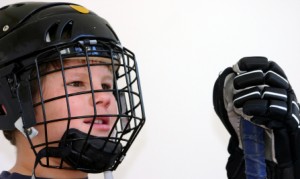
Everything you do as a teacher, from creating your room environment to how you praise your students, affects their behavior.
Recently, I watched a teacher praise a student for the good work he had done on a homework assignment.
He and his classmates were lining up on the playground before school, and while the teacher waited at the head of the line for a few last minute arrivals, he pulled his homework out of his backpack and proudly approached her with it.
The teacher took a moment or two to peruse his work, and then looked up at him. As she did, her eyes got wide, her mouth formed an exaggerated ‘O’, and she yelled out, “This is awesome! I’m so proud of you!”
It was a nice moment, and I admired her enthusiasm—especially so early in the morning. But I’m not sure her praise had the desired effect. As she hugged his shoulders and his classmates looked on, I noticed a subtle but clear look of discomfort on his face. He was embarrassed.
There are times when an over-the-top response to good student work or behavior is appropriate, but it’s not always the most effective way to praise.
Teachers who confuse their level of enthusiasm when praising students with its actual impact will have a more difficult time influencing behavior. Often, the smallest gestures have the greatest effect—a fist bump, eye contact with a smile, a congratulatory handshake. These brief but genuine moments between a student and his or her teacher can have a powerful impact.
The key to offering praise is not the level of enthusiasm you can muster. Rather, it’s choosing the right time to offer a meaningful commendation. If your praise is genuine and comes from your heart, it will have the desired effect.
I had a hockey coach who was masterful at motivating his players. During an important playoff game, the score was tied as the seconds ticked down toward the end of the game. I was on the ice with about 30 seconds left. I wasn’t a star player by any means. But I found myself on the ice at this most critical moment.
The best player on the team was also on the ice, and while he was buzzing around the other team’s goal with the puck trying to score, I decided to hang back to help protect our goal in case the other team gained possession of the puck. I was drifting near the center of the ice when, sure enough, the puck squirted loose and onto an opposing player’s stick. As he began his rush toward our goal, it occurred to me that I was the only one in a position to stop him.
He was highly skilled and blazing fast, and as he made his move to go around me, I turned to skate with him. Before I knew it, he was pulling away from me. I had just one chance to keep him from a golden opportunity to win the game. So while reaching as far as I could with my stick, I dove at the puck with all I had and swatted it away. He fell on top of me and we slid into the far corner of the ice surface and along the wall. In the meantime, our star player scooped up the puck, skated in on their goal, and scored.
The team went crazy. The bench cleared and my teammates mobbed the hero. As I skated gingerly down the ice and toward my celebrating teammates, I noticed my coach standing alone on the bench. He wasn’t looking at the rest of the players. He was looking at me. He locked his intense eyes on mine, pumped his fist ever so slightly, and nodded.
His small gesture, unnoticed by my teammates or anyone else in attendance, meant everything to me, and I would have skated through a wall to please him.
Praise can have a strong impact on your students and the behavior and academic choices they make. But it must be used mindfully—at the right time and with a heartfelt touch.
If you haven’t done so already, please join us. It’s free! Click here and begin receiving classroom management articles like this one in your email box every week.
We could all learn a lesson from this…..not just in the classroom!
A smile, verbal praise, a nod or other appropriate gestures can make students feel safe.